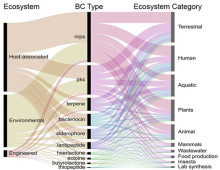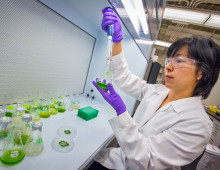First Public Resource for Secondary Metabolites Searches
IMG-ABC allows researchers to link sequencing data and the search for novel biosynthetic gene pathways. The Science: The wealth of genomic and metagenomic datasets for microbes, particularly from previously unstudied environments, within the Integrated Microbial Genomes (IMG) system is being applied in a new public database to the search for novel secondary metabolites that could… [Read More]

